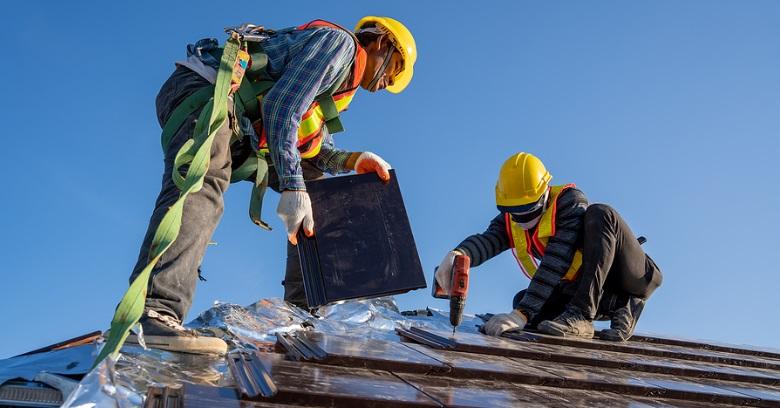
Metal roofs are one of the more durable, leak-resistant roofing options available today. Yet in order to attain a high level of service from these roofs, they must be properly installed and well-maintained. Prevent the need for metal roof repair by knowing how metal systems can leak and what you can do to prevent it.
Poor Fastening Technique
Metal roofs are fastened using special screws that work in conjunction with a small rubber gasket that seals the screw hole. Unless these screws are set properly, they can leak. Improper screw setting is responsible for the majority of leaks that occur with these roofs.
Common errors in fastening techniques that may result in a need for metal roof repair include crookedly driven screws, as well as screws that are both over or underdriven. Misaligned screws that are driven in at an angle do not seal properly against the roofing. Overdriven screws compress the gasket, causing it to crack and break. Underdriven screws do not seal the gasket snugly against the surface of the metal.
In all of these situations, leaks are the result. This illustrates how important it is that contractors use proper techniques when installing screw and gasket fasteners on these types of roofing systems.
Flashing Problems
Another common source of leaks is problems with the flashing. Flashing is a critical component on all roofs and is especially important on metal roofs. These protective covers seal around exhaust pipes, vents, and other protrusions extending through the surface of the roof. They also seal around the footers and curbs where HVAC equipment may be mounted onto commercial buildings.
Flashing used on metal systems is usually composed of rubber and sealed with rubber sealant. Over time, the flashing or the sealant can degrade due to constant exposure to the sun’s UV rays. To prevent the damage that is caused by leaking, it is essential to detect defective or deteriorating flashing and flashing seals with routine inspections and regular maintenance.
Sealant Problems
Standing seam metal systems are installed by using sealants applied in various places to prevent water from seeping under the metal. These sealants are used along ridge caps, roof transitions, and many types of trim for a nice, watertight installation. Like the rubber flashing sealant, these sealants will also wear out or break down over the years and should be reapplied before a need for metal roof repair arises.
Although standing seam systems are designed to create a watertight overlap seal between the panels on their own, some systems may experience what is called capillary draw. This is when moisture is drawn upward, against gravity, in the minute space between the standing and overlap parts of the panel seam.
This problem can be corrected by using special sealants or tape; however, they must be properly applied or the problem could worsen.
Like other roofs, metal roofs require routine inspection and proper maintenance to prevent issues that could eventually lead to damaging leaks. This is why it is so important to always work with a qualified metal contractor who can do a proper installation and monitor for issues common to metal systems. An expert installation that is well maintained will have fewer problems that require metal roof repair!




